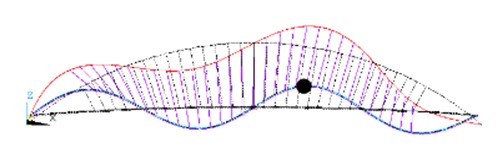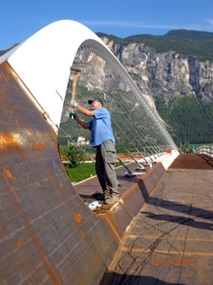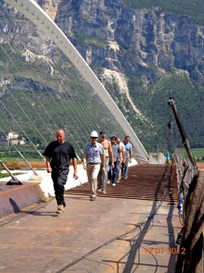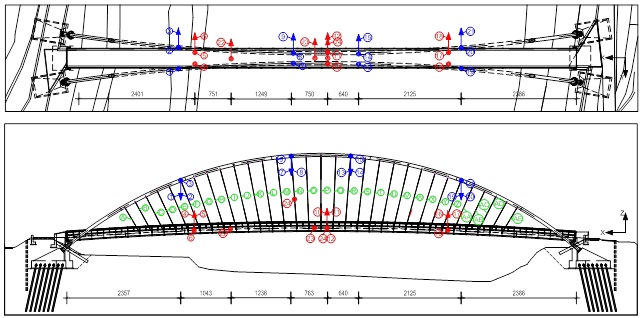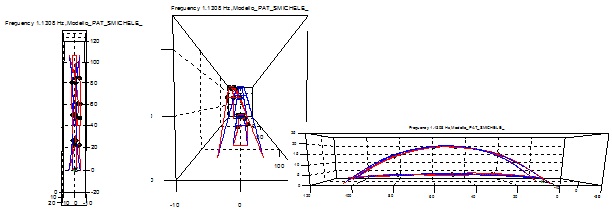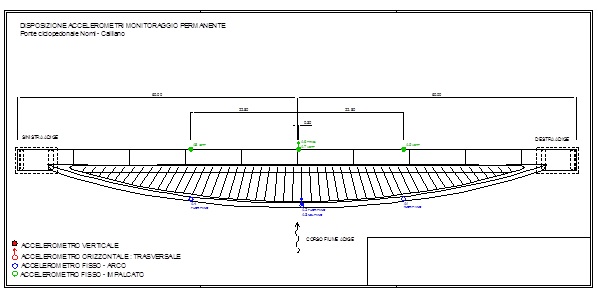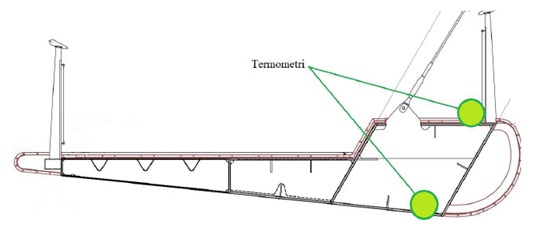Footbridge Monitoring
The Laboratory of Testing Materials and Structures (LPMS) operates, for the benefit of private and public administrations, in the contexts of the dynamic structural identification and Structural Health Monitoring (SHM).
Footbridge dynamic behaviour
Footbridges frequently show high amplitude oscillations due to their structural complexity and their lightness and flexibility.
In order to evaluate the dynamic behaviour of a structure LPMS execute dynamic identification tests and SHM.
According to the dynamic behaviour recorded in acquisitions and their interpretation, the design of damping devices could be necessary. Typically the structural analysis and design of such devices is performed by means of a numerical model of the structure tuned on the basis of experimental results (process model up-dating, see Figure 1).
Figure 1: San Michele footbridge: design of a Tuned Mass Damper based on structural dynamic identification and model up-dating
Dynamic Identification
LPMS performs the following types of tests:
- Simple Input Multi Output (SIMO) forced vibration tests, using a shaker (SST), an instrumented hammer (Impact hammer test) (see as an example Figure 2) or an external force acquired with a load cell (Snap off test);
- Ambient Vibration Test (AVT): exploiting environmental vibrations in situ (wind or traffic) to characterize the structure dynamics;
- Pedestrian excitation tests as shown in Figure 3
Figure 2: Impact hammer test
Figure 3: Pedestrian excitation test
Tests are commonly performed using the following tools:
- PCB Piezoelectric accelerometers model 352C33, 393C, A03 and B12, sensitivity range 100 mV/g -10 V/g in order to optimize the instrumental resolution in function of vibration amplitude to be acquired;
- PCB Impact hammer model 086D50;
- ElectroSEIS Electromechanical shaker model 400 and relevant amplifiers
- Load cells;
- 3 data acquisition NI 4472-B, 24 channels
- data acquisition program (in LabView);
- digital function generator;
- 2 km coaxial cables with BNC connectors
Preliminarily the execution of the dynamic tests, LPMS analyses the best instrument lay-out, typically by verifying the MAC matrix related to measuring points and frequencies of structural interest, as shown in Figure 4.
Through the use of various type of algorithms and in function of the category of performed test, it is possible to identify the frequencies and mode shapes of the structural interest. Figure 5 reports an example of identified frequency and related mode shape.
Figure 4: San Michele all’Adige footbridge: analysis of instruments layout in order to identify the dynamic behavior
Figure 5: San Michele all’Adige footbridge: frequency and mode shape identification
Structural Health Monitoring
The LPMS can monitor the static and dynamic behaviour of a structure using the combined acquisition of signals with low sampling frequency (static) (typically in the range 10-4-1 Hz – Figure 7) and high frequency (dynamic) signals (typically 102-103 Hz – Figure 6). With respect to static acquisitions LPMS offers anemometers, thermometers, hygrometer, inclinometers, strain gauges, displacement transducers (inductive, potentiometric and strain gauges). Dynamics acquisitions commonly are performed with the use of accelerometers
Figure 6: Nomi-Calliano footbridge: accelerometer arrangement in the permanent monitoring system
Figure 7: Nomi-Calliano footbridge: arrangement of thermometers and anemometers
Activities
- Ponte del Mare (Pescara): Dynamic identification and SHM
- San Michele all’Adige footbridge (TN): Dynamic identification
- Nomi-Calliano footbridge (TN): Dynamic identification and SHM
- Torre eolica presso l’Interporto di Trento (TN): Dynamic identification
- Campanile di Portogruaro: Dynamic identification and SHM

